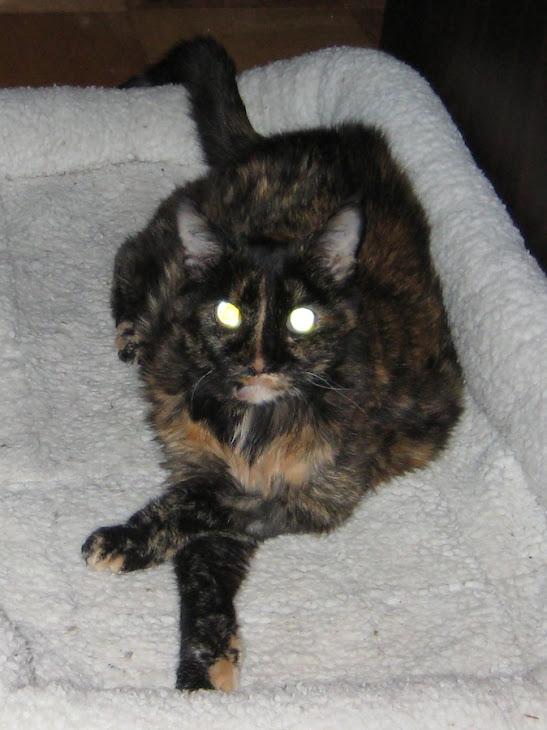Animal Abuse in 2012
Images like the one above are so hard to look at. But it's important to be aware of the evil in the world that would do harm to such gentle creatures as our feline friends. This poor mother was distraught when presented with her litter of kittens that had been mutilated to death in China. Who could do such a horrible thing to a defenseless animal?Animal Abuse Statistics
And yet, this type of thing goes on daily all over the world. According to Pet-Abuse.com, cats are second only to dogs in the number of U.S. abuse cases reported, with 3,317 cases of cat abuse reported from 2000-2010. There were 978 convictions involving cat abuse, with another 1,063 alleged and 731 still open. They report the most common types of abuse in all animals as:- Neglect/Abandonment (32.2%)
- Hoarding (12.4%)
- Shooting (11.3%)
- Fighting (8.8%)
- Beating (7.0%)
- Mutilation/Torture (5.5%)
- beating: New York, California, Florida
- bestiality: Washington, Georgia, Pennsylvania
- burning with caustic substance: California, Connecticut, Kentucky
- burning with fire or fireworks: North Carolina, Pennsylvania, Michigan
- choking/strangulation/suffocation: California, Florida, New York
- drowning: California, Florida, New Jersey
- fighting: Florida, Georgia, California
- hanging: California, Maryland, Pennsylvania
- hoarding: New York, Florida, Ohio
- kicking/stomping: California, New York, Colorado
- mutilation/torture: California, Texas, Pennsylvania
- neglect/abandonment: Florida, New York, Texas
- poisoning: Texas, Virginia, Ohio
- shooting: Florida, Texas, California
- stabbing: New York, Florida, Minnesota
- theft: California, New York, Ohio
- throwing: New York, New Jersey, Michigan
- vehicular: Ohio, Texas, Michigan
For animals that were off-leash and unconfined (such as free-roaming cats), over 57% of the cases involved shooting the animals. Another 8.8% were poisoned, while 8.3% were mutilated or tortured. When someone was retaliating against a free-roaming animal they perceived as a nuisance, 73% of the cases involved kicking or stomping the animals.
Of cases involving drugs or alcohol, 22% are cases of hoarding, 18% were neglect or abandonment, 14% beating, 11% shooting, 10% stabbing, 7% throwing, another 7% mutilation & torture, and 6% kicking or stomping.
Now for some really disturbing stats: in cases where the animal was intentionally bound -- that is, where its legs or mouth were tied up by the abuser -- 26% of the cases involved mutilation or torture, 18% involved neglect or abandonment, 11% beating, 7% choking, strangulation, or suffocation, another 7% vehicular injury, and 6% shooting.
So all types of animal abuse are happening all over America. And that's not even getting to many third-world countries where cats are routinely killed for sport, food, or poaching. Yes, it's depressing. But turning away from the ugliness does nothing to stop it.
Preventing Animal Abuse
Fortunately, there are steps we can all take to stop animal abuse. Not everybody can do everything, but if we each do what we can, it will go a long way.
- Report animal abuse to authorities if you suspect it. This includes incidents of animals left in hot cars, those that are noticeably malnourished, or those left chained outdoors and unprotected in severe weather.
- Care for a colony of community cats. When managed properly in a Trap-Neuter-Return program, these cats live longer, healthier lives and are less vulnerable to abusers.
- Keep your cats indoors, or always keep them on a leash or in a secure enclosure if they go outdoors.
- Spay or neuter your cats to prevent the overpopulation of pets that contributes to the problem of healthy pets being euthanized merely for lack of a home.
- Teach your children about responsible, loving care of pets. Don't have kids of your own? Speak to them in schools or after-school groups about proper animal care and interaction.
- Support your local shelter by volunteering or donating supplies or funds. Every shelter is understaffed, underfunded, and needs help in some way.
- Purchase responsibly, and don't fuel the market for poaching by buying exotic skins, meats, remedies, or products made from endangered or mistreated animals.
- Advocate on behalf of cats whenever you can. Write letters, speak at public meetings, or help educate your legislators about issues. We have a page of Free Downloads that include brochures on Effective Management of Feral Cats and Humane Euthanasia that you can print as needed to help you.
Yes, animal abuse like that shown above is disturbing to see, and the temptation to turn away from it is great. But only by facing the problem can we stop it. Once awakened, we can no longer turn away.









No comments:
Post a Comment